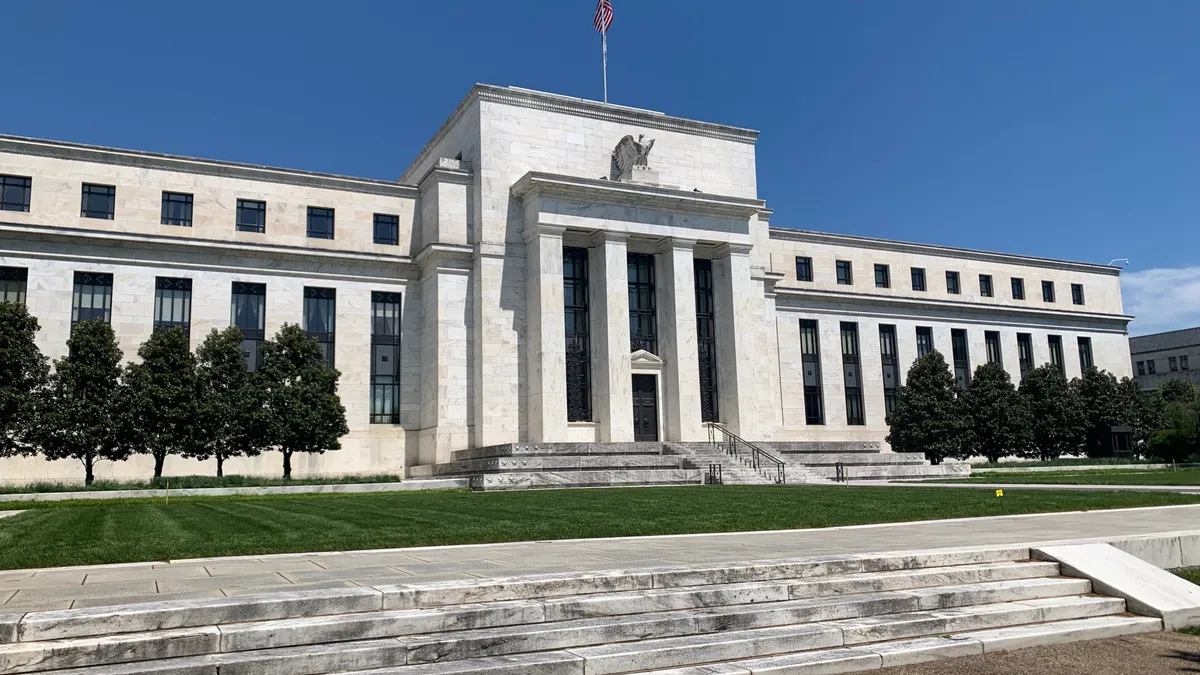Dive Brief:
- About 75% of U.S. businesses surveyed in a Fed report issued Tuesday said they expect to start using faster payments, or to make more use of them soon.
- Overall, 90% of the 2,010 U.S. businesses surveyed by the Fed expect to use faster payments in their operations by 2023, and many are ready for that upgrade now, the Fed said in the report. The survey, conducted in the second half of last year, included large and small businesses from an array of industries, including retail, manufacturing and professional services.
- With the COVID-19 pandemic egging on e-commerce and more digital payments, a majority of the businesses surveyed have already used faster payments, defined as electronic payments that deliver funds to the payee within seconds, or within up to a few hours after initiation of the payment by the payer. However, fewer than 60% of micro businesses are likely to tap faster payments anytime soon, the survey found.
Dive Insight:
The Fed conducted the survey as banks are gearing up for the FedNow program, an instant payment system that is expected to roll out faster payments nationwide by 2023. It would enable financial institutions to make “safe and efficient” instant payments in real time available 24 hours a day across the U.S.
At the surveyed businesses, financial decision-makers such as CFOs, treasurers and account administrators, said they wanted faster payments to improve cash flow management with “speed and finality” and to make operations more efficient with help from instant payment data and messaging.
The top business-to-business use case cited by respondents was paying suppliers, with 44% of businesses listing that as a reason to use faster payments. For consumer-to-business purposes, the top reason for speedy payments was payment of recurring bills, with 33% citing that as a goal. And for business-to-consumer aims, the top objective was to rev up payroll processing, with 48% naming that consideration.
A “large majority” of the businesses had used some form of faster payment in the past 12 months, primarily in the form of digital wallets, the same-day service offered through the national ACH Network, or a push-to-debit-card payment service, the survey found.
While more than three-quarters of surveyed businesses found it important for financial institutions to offer faster payments, their size figured into their willingness to participate. The cost, benefits, security and reach of the faster payment systems all factored into their embrace of the services, with smaller enterprises most concerned about cost and larger ones focused on network reach and efficiency benefits.
“Nearly half of respondents indicated that the pandemic is causing them to accelerate their plans for adoption,” the report said.
About half the respondents also suggested they could be up and running with a faster payment system in less than a year. On that front, they’re moving faster than the Fed. The federal government has been working on its FedNow system since 2019, and is aiming for a launch in 2023. This year, it began working with some 110 private-sector partners now to develop a pilot program.
"The FedNow Service is developing capabilities to address business needs for safe, instant, data-rich payments and collaborating with financial institutions and business solution providers to implement them when the service launches in 2023,” Nick Stanescu, a senior vice president at the Federal Reserve Bank of Boston, said in a Tuesday press release accompanying the Fed's report.
U.S. banks have already developed a rival real-time payments system via The Clearing House, and it's been gaining ground among businesses since it was rolled out in 2017. Nonetheless, that New York-based system is still nudging businesses to make the technology investments they need to make for broader use of the system.
A Clearing House official said this year that the private real-time payments system is expected to reach 90% of customer accounts by the end of the year, up from about 60% in May, following the integration of payments processor Fiserv into the system.














